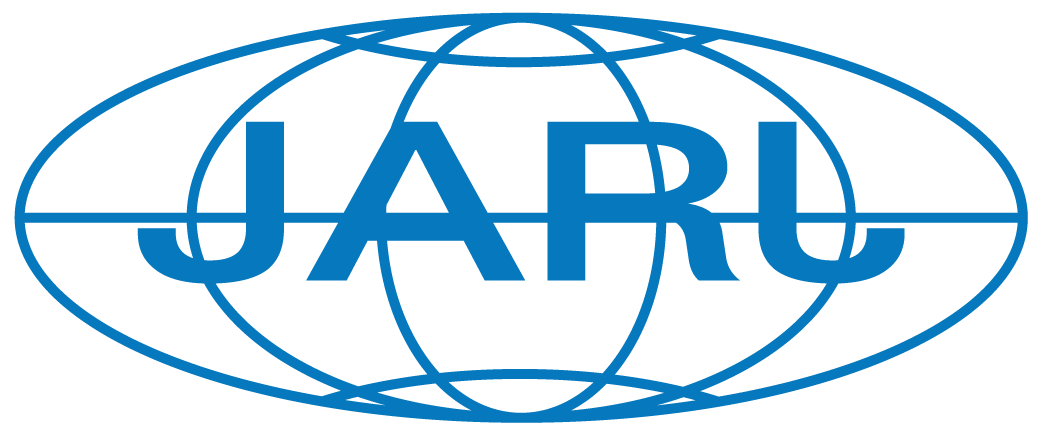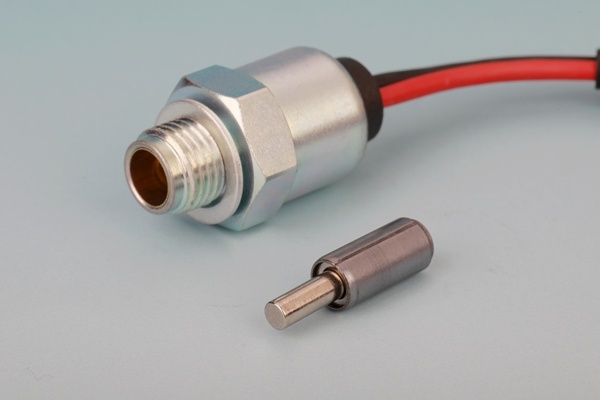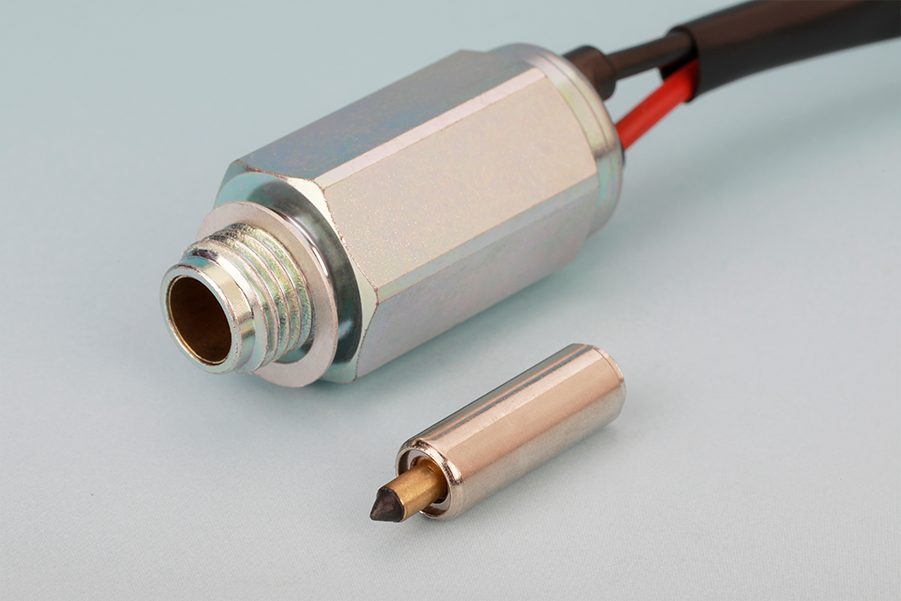The Impact of Precision CNC Milling Parts on Overall Production Efficiency
Release Time:
Apr 20,2025
The Impact of Precision CNC Milling Parts on Overall Production Efficiency Table of Contents Introduction to CNC Milling Technology Understanding CNC Milling and Its Applications Benefits of Precision CNC Milling Parts How CNC Milling Works: A Step-by-Step Overview The Impact of CNC Milling Parts on Production Efficiency Quality Assurance and Conformance in CNC Processes
The Impact of Precision CNC Milling Parts on Overall Production Efficiency
Table of Contents
- Introduction to CNC Milling Technology
- Understanding CNC Milling and Its Applications
- Benefits of Precision CNC Milling Parts
- How CNC Milling Works: A Step-by-Step Overview
- The Impact of CNC Milling Parts on Production Efficiency
- Quality Assurance and Conformance in CNC Processes
- Industries Benefiting from CNC Milling Technology
- Future Trends in CNC Milling Technology
- Conclusion
- Frequently Asked Questions (FAQs)
Introduction to CNC Milling Technology
In the dynamic landscape of modern manufacturing, precision and efficiency are paramount. **CNC (Computer Numerical Control) milling** represents a significant technological advancement that allows businesses to produce parts with remarkable accuracy. CNC milling involves the use of computerized systems to control machine tools, enabling the fabrication of complex shapes and components from various materials.
This article explores the profound impact of precision CNC milling parts on overall production efficiency. By examining the benefits, methodologies, and future trends of CNC milling, we provide a comprehensive understanding of how this technology transforms manufacturing processes.
Understanding CNC Milling and Its Applications
CNC milling machines operate by removing material from a workpiece to achieve the desired shape. This process utilizes various cutting tools that rotate at high speeds to carve out intricate designs with precision. The versatility of CNC milling allows for applications across a range of industries, including aerospace, automotive, medical, and electronics.
**Key Applications of CNC Milling**:
1. **Aerospace Components**: Producing lightweight and robust parts that meet stringent safety standards.
2. **Automotive Manufacturing**: Creating intricate engine components and assemblies.
3. **Medical Devices**: Ensuring precision in instruments and implants that require high accuracy.
4. **Electronics**: Fabricating delicate housings and circuit boards.
Benefits of Precision CNC Milling Parts
The integration of precision CNC milling parts into manufacturing workflows offers numerous advantages:
1. Enhanced Accuracy and Consistency
CNC milling technology ensures that parts are produced with high levels of precision. **Robotic control** eliminates human error, leading to consistent quality across all produced components.
2. Reduction in Waste
By optimizing material usage, CNC milling minimizes waste during the manufacturing process. This not only reduces costs but also makes production more sustainable.
3. Increased Production Speed
CNC machines can operate continuously without the need for breaks, significantly increasing production rates. This efficiency enables businesses to meet demanding deadlines.
4. Flexibility in Design
The capability to produce complex geometries allows for innovative designs that were previously difficult or impossible to achieve with traditional machining methods.
5. Lower Labor Costs
With automation at the core of CNC milling, businesses can reduce their reliance on manual labor, leading to substantial savings in labor costs.
How CNC Milling Works: A Step-by-Step Overview
To appreciate the impact of CNC milling, it is essential to understand how this process functions. Here’s a breakdown of the workflow:
Step 1: Design and Programming
The first step involves creating a detailed **CAD (Computer-Aided Design)** model of the part. This model is then converted into a CNC program using **CAM (Computer-Aided Manufacturing)** software, which translates the design into machine code.
Step 2: Setup of Machines
Next, the CNC machine is set up with the appropriate tools and workpieces. The setup requires careful calibration to ensure that the machine operates at optimal efficiency.
Step 3: Machining Process
Once the setup is complete, the CNC machine begins the milling process. The cutting tools rotate and move across the workpiece, gradually removing material to form the desired shape.
Step 4: Quality Control
After machining, the finished parts undergo quality control checks to ensure they meet specified tolerances and standards. This may involve both visual inspections and precision measuring tools.
Step 5: Finishing Touches
In the final stage, additional processes such as polishing or coating may be applied to enhance the part’s appearance and functionality.
The Impact of CNC Milling Parts on Production Efficiency
Precision CNC milling parts significantly influence production efficiency in several key areas:
1. Streamlined Operations
By automating machining processes, companies can streamline operations and reduce bottlenecks. This leads to faster turnaround times and improved workflow.
2. Improved Scalability
CNC milling allows manufacturers to scale production easily. Whether producing small or large batches, the technology can adapt quickly to changing demands without compromising quality.
3. Enhanced Customization
With CNC milling, companies can easily customize parts to meet specific customer requirements. This flexibility can be a competitive advantage in industries where personalization is vital.
4. Lower Production Costs
The combination of reduced labor costs, minimized waste, and rapid production results in overall lower production costs, making CNC milling a cost-effective solution.
5. Increased Competitive Advantage
Businesses that adopt precision CNC milling technologies can outperform competitors by delivering high-quality products faster and at lower costs, establishing themselves as leaders in their industries.
Quality Assurance and Conformance in CNC Processes
Quality control is integral to CNC milling processes. Manufacturers must adhere to strict regulatory standards and industry benchmarks to ensure that precision parts meet customer expectations.
1. Industry Standards
Most industries have specific standards, such as ISO certifications, that companies must comply with. Achieving these certifications requires robust quality management systems in place.
2. Continuous Monitoring
Implementing real-time monitoring systems can help detect anomalies during the machining process, allowing for immediate corrective actions and ensuring high-quality output.
3. Training and Skills Development
Investing in the training of personnel operating CNC machines is crucial. Skilled operators who understand the intricacies of CNC technology can significantly contribute to maintaining quality and efficiency.
Industries Benefiting from CNC Milling Technology
Several industries leverage CNC milling technology to enhance their production capabilities:
Aerospace
The aerospace industry demands the highest levels of precision and quality. CNC milling is essential in producing critical components, such as turbine blades and brackets.
Automotive
Automakers utilize CNC milling to manufacture intricate parts, ensuring that every component meets the stringent safety and performance standards required in the industry.
Medical
In the medical field, CNC milling is employed to create surgical instruments and implants, where accuracy and reliability are non-negotiable.
Electronics
The electronics sector benefits from CNC milling in producing circuit boards and enclosures, where precision is critical for functionality.
Future Trends in CNC Milling Technology
As technology continues to evolve, several trends are shaping the future of CNC milling:
1. Integration of AI and Machine Learning
The incorporation of artificial intelligence and machine learning into CNC processes will enhance predictive maintenance and optimize machining strategies, leading to greater efficiency.
2. Advanced Materials
With the development of new materials, CNC milling will adapt to handle more complex and diverse substances, expanding its applications.
3. Eco-Friendly Practices
Sustainability will become a focal point in manufacturing, with CNC milling processes evolving to minimize environmental impact and promote greener practices.
4. Increased Automation
Robotics will further automate CNC milling processes, reducing reliance on human intervention and enhancing production rates.
5. Custom Manufacturing Solutions
Demand for customized solutions will drive the evolution of CNC technology, enabling manufacturers to respond swiftly to individual client needs.
Conclusion
Precision CNC milling parts profoundly impact overall production efficiency in the manufacturing sector. By enhancing accuracy, reducing waste, and streamlining operations, CNC milling technology helps businesses achieve remarkable outcomes. As industries continue to evolve, embracing CNC milling will provide a competitive edge essential for success in today’s fast-paced market.
Frequently Asked Questions (FAQs)
1. What is CNC milling?
CNC milling is a process that uses computerized controls to operate milling machines, allowing for the precise fabrication of parts from various materials.
2. How does CNC milling improve production efficiency?
CNC milling enhances production efficiency through automation, increased speed, and the ability to produce high-precision components with minimal waste.
3. What industries primarily use CNC milling technology?
Industries such as aerospace, automotive, medical, and electronics heavily rely on CNC milling for the production of critical components.
4. Can CNC milling accommodate custom designs?
Yes, CNC milling is highly flexible, allowing manufacturers to create custom parts tailored to specific client requirements.
5. What are the future trends in CNC milling technology?
Future trends include the integration of AI and machine learning, advancements in materials, eco-friendly practices, increased automation, and custom manufacturing solutions.
Related content




